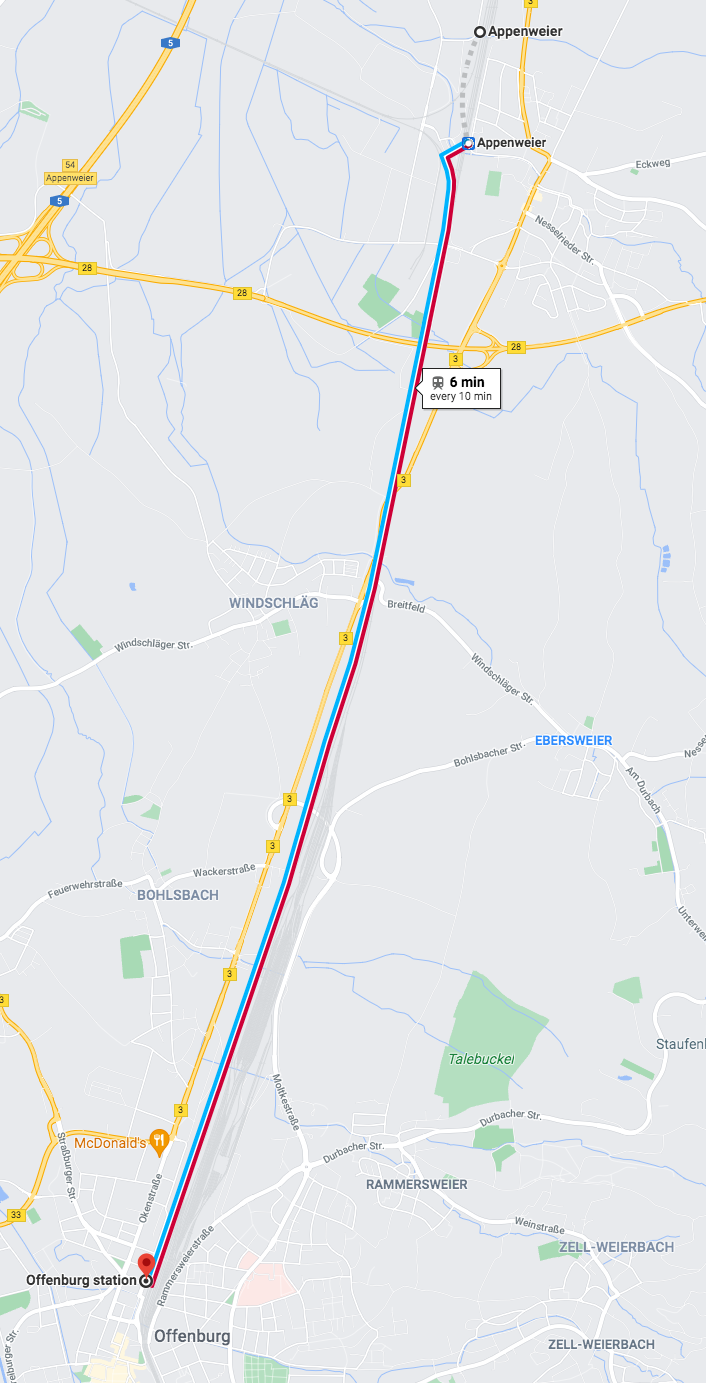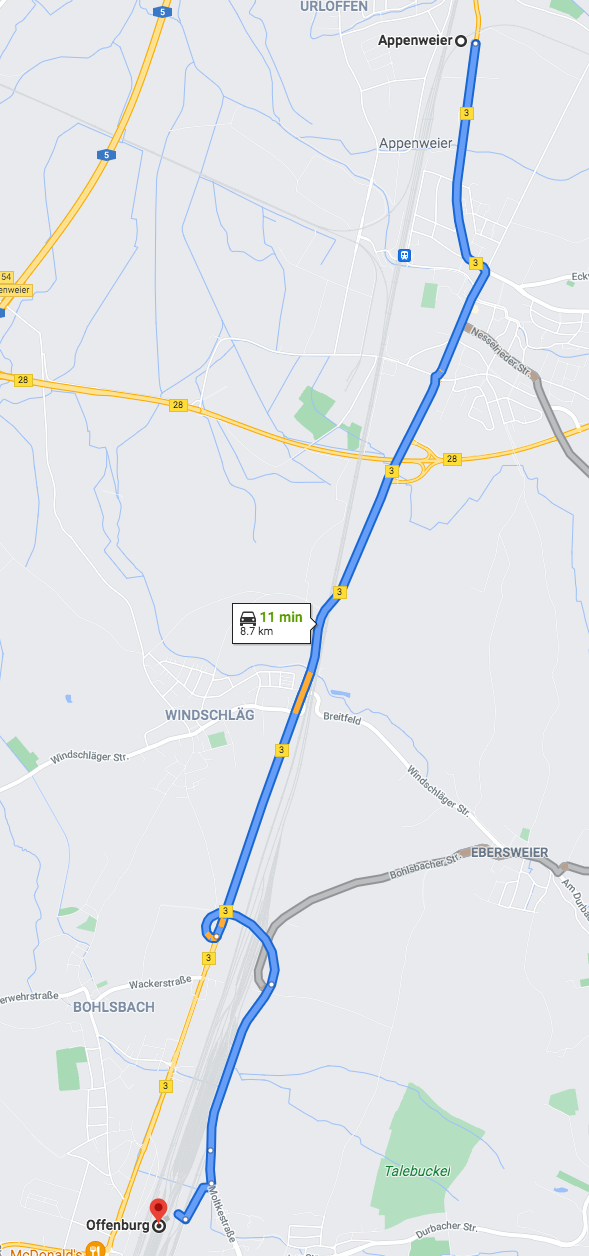GEO Model
Summary
The GEO model helps to bridge the gap between Railway based masterdata and sensor based information (e.g. GPS positioning) by providing translation and search services.
Use Cases
UC1: Relate a point to the nearest track
With the provided point the service calculates the nearest track with the OSM start and end location.
- Input: GEO coordinates of a point
- Output: OSM track, OSM start location and OSM end location of track and the distances to the given point.
- Value: A user can relate a sensor GPS-based information to the railway network.
- Dependency: none
- Objects
- SearchPoint
- OSMlocation
- OSMway
- Distance
- Examples
- Input: 48.5527102, 7.9794698
- Output: nearest Location: 48.5535490, 7.9783601, 120m
- Part of 1 way Renchtalbahn (302666407)
- detail track
- electrified no
- gauge 1435
- name Renchtalbahn
- operator DB Netz AG
- passenger_lines 1
- railway rail
- railway:preferred_direction both
- railway:track_class D4
- railway:traffic_mode passenger
- ref 4262
- start_date 1876-06-01
- usage branch
UC2: Relate to RINF segments
With a provided OSM track the service search the corresponding RINF segments. This can be smaller, equal or larger than the OSM track. If it is smaller several RINF segments are provided to match the whole stretch of the OSM track.
- Input: OSM track
- Output: RINF segments
UC3: Find nearest TAF location
With a provided OSM track or RINF segment the service search the nearest TAF location to “the right” and nearest to “the left”. The TAF location must not be on the track or segment. It can be also at a certain distance to it.
- Input: OSM track or RINF segment
- Output: TAF location “left”, TAF location “right” and their distances to the given track/segment.
The service calculates whether two given locations are belonging to the same MetaGare. A MetaGare clusters several locations together which are forming a larger station, shunting yard, terminal, port.
- Input: Two TAF locations
- Output: yes/no and which MetaGare they belong to.
UC5: Shape a location
The service search the suitable OSM shape for a provided set of coordinates. The shape can be a OSM polygon, a way or a node. This information includes railway
- Input: GEO coordinates of a point
- Output: Railway layer based OSM polygon which relates to this point with the distance between them
- Value: A RU can get information about the functions, limitations and facilities on the leg and locations.
- Dependency: none
- Objects
- OSMpolygon
- OSMmultipolygon
- OSMnode
- OSMway
- Distance
- Example
- Input
- Output
{
"type": "way",
"id": 59584294,
"nodes": [
27160994,
1302504899,
3075040471
],
"tags": {
"detail": "track",
"electrified": "contact_line",
"frequency": "16.7",
"gauge": "1435",
"name": "Rheintalbahn",
"operator": "DB Netz AG",
"passenger_lines": "4",
"railway": "rail",
"railway:bidirectional": "regular",
"railway:lzb": "no",
"railway:preferred_direction": "forward",
"railway:pzb": "yes",
"railway:traffic_mode": "mixed",
"ref": "4000",
"usage": "main",
"voltage": "15000",
"workrules": "DE:EBO"
}
}, {
"type": "way",
"id": 95633893,
"nodes": [
1302504998,
1108872911,
1302505026,
1302505014,
1302504855,
3780857871,
3417569762,
3417569761,
5313441203,
1108872905
],
"tags": {
"detail": "track",
"electrified": "contact_line",
"frequency": "16.7",
"gauge": "1435",
"operator": "DB Netz AG",
"railway": "rail",
"railway:pzb": "yes",
"railway:traffic_mode": "mixed",
"service": "siding",
"voltage": "15000",
"workrules": "DE:EBO"
}
}
UC6: Calculate distance between two locations
Given two locations the service calculates the shortest (bee line) distance as well as the shortest track based distance between them.
- Input: two locations with their GEO coordinates or their TAF CRD ID
- Output: shortest (bee line) and shortest track distance
- Value: A RU obtains distances for his planning and operation. This information helps him to apply his planning.
- Dependency: none
- Objects
- Point
- TrackDistance
- Distance
- Examples
- RailwayKM
- StreetKM

